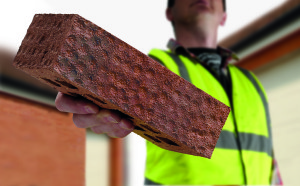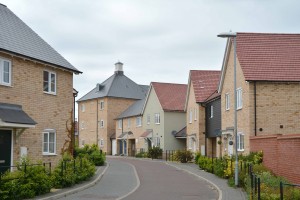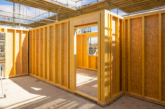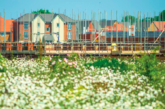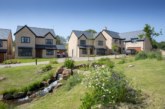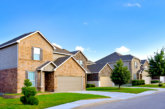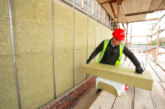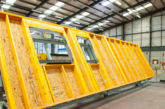
Q: The brick industry has received criticism in the past few years for the under-supply of bricks to the building industry. What is the current position?
Brick is the number one cladding material of choice and production continues to rise to satisfy the continued demand. Despite demand for brick hitting the headlines last year, the latest figures from the Office for National Statistics show brick production has risen by 7% and UK brick manufacturers have made 2 billion bricks over the past twelve months. Our average lead times for bricks are now 4-6 weeks.
Q: The new Ibstock Brick facility to make an additional 100m bricks a year is a significant investment. Why is now the right time to commit to this development?
The demand for brick was a key driver for the development of our state-of-the-art new facility. We anticipate that this will continue as housebuilders strive to meet Government targets, including the 400,000 affordable new homes announced in 2015’s Autumn Statement.
This is why, as the UK’s largest brick maker, Ibstock continues to invest in its production facilities, building on previous investments including £22m at our Chesterton site. The new factory will bring an additional 100m bricks to market, roughly enough for 15,000 new homes. When completed, it will be the UK’s most modern brick facility and bring 50 new jobs to the area to supplement the existing 340-strong workforce already there.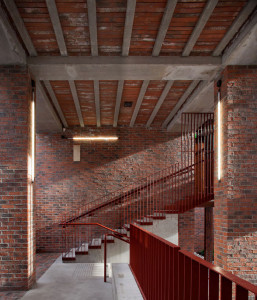
Q: Other ways of creating the fabric of a new home, such as timber frame or panels, have grown over recent years. Why does brick continue to hold such a strong position in the construction of new homes?
Real clay brick has a long history as a diverse, sustainable and aesthetic building material. First used over 5,000 years ago and still prolific today, brick’s longevity is proof of its credentials. This heritage, combined with modern manufacturing methods which create a consistently high quality product across a range of shapes and finishes, means brick remains at the forefront of building options. In fact, 80% of all new homes are built using brick.
Made from entirely natural materials – clay and shale – brick is the greenest building material available. Buildings constructed with brick are naturally more energy efficient, as it has superior ‘thermal mass’ properties, contributing to a better EPC rating for new properties.
It is also one of the most durable building products – the National Institute for Standards and Technology (NIST) gives brick masonry a 100-year life – meaning less energy is wasted manufacturing replacement product, or maintaining the building’s appearance. This combination of factors makes brick a clear choice for a society increasingly concerned with its carbon footprint.
Aside from the sustainability credentials, the attraction of brick is the virtually limitless options available in terms of shape, size, colours and finishes. This allows housebuilders to create stunning new designs with ease. There are also a number of technical solutions available to speed-up construction when working to short timescales, which is important at a time of intense house building activity. Ibstock has developed a range of prefabricated solutions such as Faststack real brick chimneys, or Fastwall real brick slips – both of which can be integrated into a build with ease. And, our Everyday Specials range offers a selection of pre-cut special shapes and prefabricated arches which allow builders to create interesting designs quickly and easily.
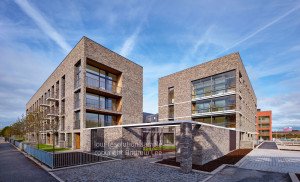 Q: Environmental impact is a key requirement for many developments. What are the sustainability credentials of brick?
Q: Environmental impact is a key requirement for many developments. What are the sustainability credentials of brick?
“Ibstock takes sustainability extremely seriously and supports the view that it is a vitally important issue for the future of construction. That is why we were delighted to see brick become the first construction product to gain verification under the BRE Global’s Environmental Product Declaration (EPD) scheme. This ensures its environmental impact can be effectively measured in comparison to other materials.
Brick is a natural product that has very little added to its mixture. Unlike many other building materials, it has low toxicity and does not use preservatives. It also lacks the volatile organic compounds commonly found in the formulation of plastic and synthetic materials. As well as durability – many brick buildings centuries old are still in use – brick also produces very little in terms of wastage through the manufacturing process. As a heavy, dense material it also has excellent thermal mass properties, making it highly energy efficient.
Q: What are the new developments in brick that housebuilders can use to create interesting, thermally efficient and aesthetically attractive new homes?
Brick’s usage in a number of striking, award-winning architectural design projects is testament to its credentials as a flexible and innovative building material. Available in a wide range of shapes, colours and finishes, brick is increasingly being selected to help differentiate and enhance design solutions, while its sustainability credentials ensure it remains a favourite with specifiers.
Among the most popular styles are linear bricks for dramatic and elongated effect. These long, narrow bricks allow housebuilders to create distinctive, yet elegant, exteriors which retain their longevity and traditional feel. A striking effect is created by juxtaposing a traditional building material with a contemporary design style. Available in a number of colours and finishes, Linear provides over 70 colour and texture options to create unique designs time and time again.
Ibstock Glazed finish bricks for visual appeal are also trending at the moment. These are manufactured from specially selected, ultra-pure clays and finished with carefully selected ceramic glazes in a huge variety of colours, sizes and finishes. The use of colour adds depth and distinction, to differentiate between two buildings or parts of the façade.
Popular brick design techniques also include underslung soffits. These are being deployed to complement the use of colour, texture and finish across the building envelope. Underslung soffits are an ideal solution for designs where unusually shaped and long openings need to be catered for, or where there is restricted access or little or no bearing surface available.
Nexus, a new lightweight stainless steel based system developed by Ibstock-Kevington and Ancon Building Products, makes fitting soffits simpler and quicker with better handling coupled with maximum adjustability, both vertically and horizontally, for quick and simple alignment on site.
Q: What design advice does Ibstock offer housebuilders looking to use brick to create stunning new homes?
Ibstock compiles a quarterly ‘Design’ magazine which showcases the latest innovations in brick, and how they can be used to create stunning architectural visual effects. Each issue provides inspiration for architects looking for something different with their next project, by providing a comprehensive overview of how Ibstock’s technical and design experts – working in conjunction with housebuilders and architects – have helped create remarkable building exteriors through the use of varied brick products and state-of-the-art bonding techniques, producing outstanding and award-winning results.
We also have an online bespoke blends tool which allows specifiers to create their own custom brick blends, using up to three brick types and an array of mortar colours to match particular projects. Ibstock is committed to working in partnership with housebuilders to bring design aspirations to life.

